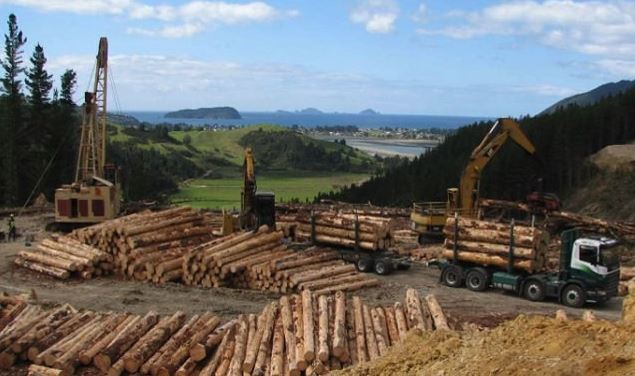
Hopes are high that India can return to its status as one of New
Zealand’s top five timber export destinations as demand for logs
there starts to gather pace.
As recently as 2019, India accounted for $243 million of annual
log exports totalling 1.7 million cubic metres. That put it
among this country’s top five export destinations, ahead of
South Korea’s $145m, but well back on China, our No 1 market,
totalling about 19 million cubic metres.
However, the 2019 peak quickly declined when regulations
limiting the use of the fumigant methyl-bromide came into
effect, banned for use in ship’s holds and effectively killing
the trade there.
Trade in timber products fell to $9.5m in 2023 but has since
lifted to $77m so far this year, with shipments resuming subject
to methyl-bromide being used on arrival in India.
Pulp exports have also more than doubled from $20m to $45.6m.
Wood Processors and Manufacturers Association of NZ (WPMA) CEO
Mark Ross said while logs are starting to rebuild, it is still a
tough road for processors with finished wood products to sell in
India.
“There are assorted non-tariff trade barriers and tariffs. We
face tariffs up to 30% on finished products, similar to what we
have faced in China.
“We are hoping this will be something that can be resolved as we
would really like to target more high-value exports there.”
Tariffs on logs amount to 5%.
AgriHQ analyst Reece Brick said industry estimates are that free
trade in timber products and logs could add about US$7 per cubic
metre to the trade. Based on the 2019 peak this could amount to
almost an additional NZ$10m-plus to exporters.
“India has always been a very useful market to help buffer us
against the volatility of the Chinese market. The loss of
tariffs would help us be more competitive with the likes of
Australia and Uruguay as exporters.”
Forestry, Trade and Investment Minister Todd McClay has
announced forestry-specific trade missions to India in coming
months as part of NZ’s wider free trade discussions with India.
The inbound visit, supported by industry partners, will showcase
New Zealand forestry systems and sustainable management
practices.
McClay said NZ’s relationship with India is a priority with
forestry part of that.
“The goal is clear to grow the market, remove barriers and drive
better returns back to NZ’s foresters and processors.”
Ross said India faces limited domestic supplies for timber but
has the ability to source products from other global players
that face significantly lower tariff rates.
Source: farmersweekly.co.nz